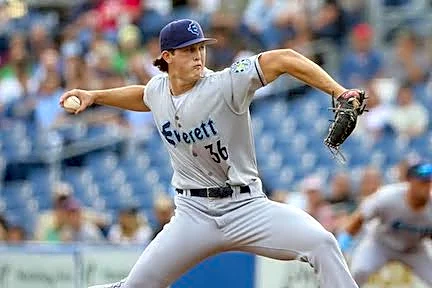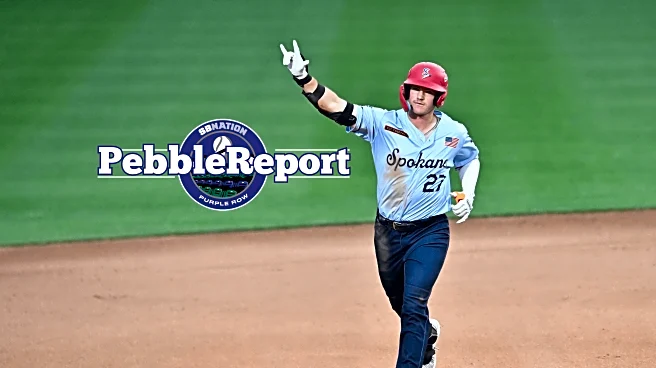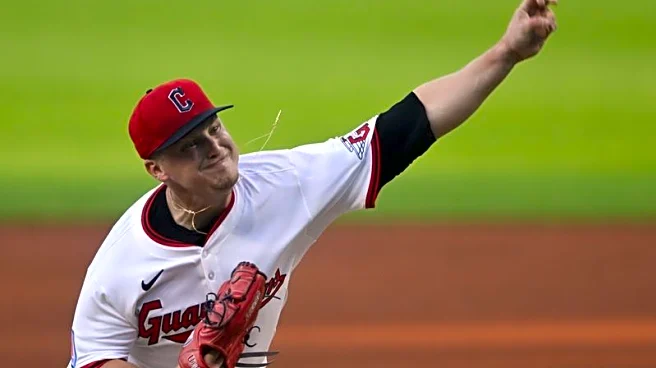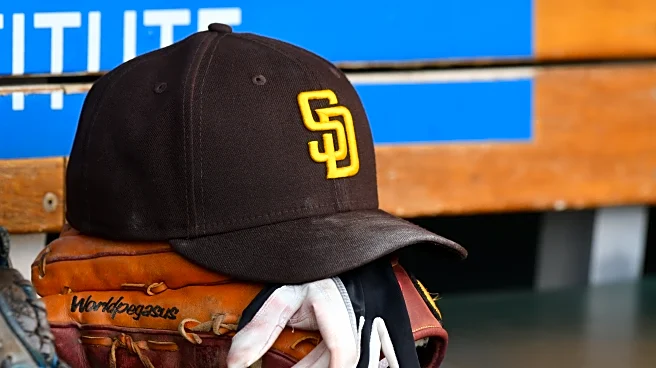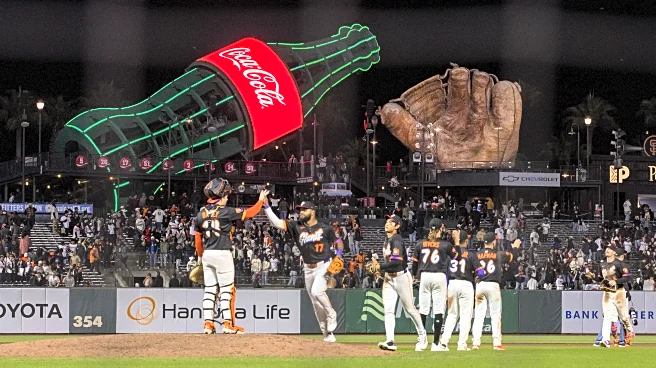
It’s late August, which means all across the country young adults are packing up their XL twin sheets and heading back to college. At nineteen and a half years old, Ryan Sloan could be among their ranks, trading in sunblock for textbooks. Instead, he’s still working at his summer job, which happens to be throwing baseballs for the Seattle Mariners organization. But even outside the classroom, Sloan is continuing his education, too, honing his craft in professional baseball.
The Mariners bought Sloan
out of his college commitment to Wake Forest by taking him in the second round of the 2025 draft out of his Chicago-area high school, believing strongly enough in the promise of the 6’5” hurler to go nearly double over slot value (from $1.642M to $3M), spending almost the entirety of their bonus pool with their first two picks. As they often do with high school draftees, the Mariners didn’t assign Sloan to an affiliate in his draft year, developing him at the team’s complex in Arizona instead before assigning him to Low-A Modesto, skipping him over Rookie ball and sending him straight to a full-season affiliate.
It was a somewhat aggressive assignment for a prep pitcher, but Sloan held his own against the more seasoned hitters of the California League, gradually building up his innings count and gaining experience. He announced himself loudly to the larger prospect-watching world in his second professional outing, striking out seven hitters over 3.2 innings:
Sloan pitches off his four-seamer, which sits around 95-96 mph and possesses arm-side run and good carry despite average IVB (15”). The biggest point of emphasis at this point is holding the velocity on the pitch, something Sloan says he knows will get better the more he’s out getting professional reps. In his last start in Everett on the 23rd he was as high as 97 on the stadium gun in the first inning, but ticked down to 93-94 in his fourth inning of work. Sloan has the size and strength to be able to throw that pitch with command at premium velocity; the work is more in being consistent with his mechanics—keeping his long arm path tight to his body on his delivery and not yanking pitches on his follow-through—and drawing strength from a solid base by keeping his powerful lower half engaged.
“As much as I can throw that pitches up for strikes, that’s better,” Sloan said. “But really, when it comes to holding velo, all I have to do is throw more. At the end of the day, it’s the only way that I’m going to throw hard through the entire game. Just throwing boxes.”
Sloan also has two slider variants: one, a slower sweeper; and another one he calls a “cutter” which seems to be more on the “hard slider” side of the fastball-slider divide of cutters, with similar run to his fastball but on the glove side. The low-80s sweeper, which is the newer addition to his arsenal, has about 14” of glove-side run, vs. the high-80s cutter’s 5”. On the night I saw him he had trouble being consistent with the cutter, letting a couple leak some into the middle of the plate, but that’s a weapon he can use against lefties, boring it in on them for weak contact and foul balls down the right-field line.
Likewise, the sweeper can get away from him at times and run too far off the plate to be tempting to hitters, but when he can land it consistently—again, something that will come from being consistent in his mechanics—he can get righties to reach across the plate for weak contact as well as back-footing it to lefties for swinging strikes.
But Sloan’s most exciting pitch right now is the changeup—sometimes called a splitter, but he calls it a changeup—that’s been a newer addition to his arsenal:
It’s understandable why it’s been labeled a split as it has that action, with sharp, late break. What’s maybe most impressive about the pitch is that Sloan learned it on the fly as a high schooler, developing it as a weapon against lefties when he had to face a slate of them in a showcase event, showing a preternatural feel for a notoriously finicky pitch. The changeup gives him another weapon to use against lefties, but it’s also morphed into one of his best swing-and-miss offerings. Staffer John Trupin calls this the best changeup in the Mariners system, and while he’s right, it will be interesting to track how much national attention the pitch gets as Sloan continues his ascent through the minor leagues.
But maybe the thing that stood out the most about Sloan in my chance to see him pitch in person is his mound presence. Sloan is a true bulldog on the mound; he works quickly and holds runners well, and he attacks the strike zone relentlessly. It’s been a happy marriage between player and an organization that preaches the importance of competing in the zone and urging pitchers to have the confidence to throw in the zone.
“They give us all the stats and analysis that back it up,” Sloan said of the Mariners. “If you get ahead, more often than not, you’re going to end up in a good spot…They do a good job building confidence through their models telling me that this stuff’s extremely good. All you have to do is throw in the zone at the end of the day, so that’s been my main goal. Stay in the zone and good things usually happen.”
Sloan is able to carry that mindset even when baseball doesn’t reward him for his process; he gave up three unlucky runs in one inning during his outing, on a jam shot that fell for a hit, a groundball base hit, and an ambush pull homer that just sneaked fair over the left-field line. Sloan was understandably annoyed postgame, but also reflective and matter-of-fact, showing why Mariners’ officials rave about his makeup.
“Honestly, I thought I threw really well. Slider, cutter, changeup, I thought all were executed extremely well. Some things just didn’t go my way. I gave up a three-run home run. That’s my day. So what am I going to do? Whine about it? Every time that something doesn’t go my way, there’s still always something to take out of it. I’m just going to try to support my team, try to get a win. So it doesn’t help if I’m on the bench thinking about my outing.”
Sloan is currently running a walk rate around 5% over his professional career, and I would expect that number to hold steady even as he ascends the minor league ladder, as he gains more reps in pro ball and refines the command on his secondaries. He’s a strike-thrower who is stubborn in the zone; on the night I saw him in Everett on August 23rd he threw 16 of 18 first-pitch strikes, and 42 of his 52 pitches overall for strikes.
“For me, that’s my main goal,” he said postgame. “I don’t want to walk anybody. If you’re going to put up runs against me you’re going to have to put the ball in play and string together a lot of hits. You’re going to have to earn your way on.”
One of the best matchups of the night was Sloan vs. Rockies prospect Max Belyeu, a competitive balance round pick for Colorado this year out of Texas with three years of SEC experience under his belt. Belyeu gave Sloan all he could handle in a 17-pitch at-bat, the longest of Sloan’s career up to this point. Sloan threw everything he had at the lefty Belyeu, alternating between all four of his pitches, never backing down, and eventually winning the at-bat with a flyout on the cutter. Sloan knew the pitch was an out the second he heard the sound the ball contacted the bat. “I executed it perfectly, I didn’t think he got a good bat on it. It was just a hell of a battle, though.”
“When it gets that deep, in my head I was just like, I’m going to win this battle no matter what,” Sloan said, grinning. “I throw this many pitches, there’s no way I’m going to lose it.”
“It’s a great learning lesson,” Sloan said of his longest career at-bat, saying he just called whatever his catcher, Josh Caron, called for. “Especially when a guy’s seeing it well, just kind of fouling it off, and I’m making really good pitches throughout it. Just doing whatever I can do to mess up the timing, mess up his rhythm. So I just want to execute like that the next time out there in a battle like that and try to finish it quicker.”
The Mariners have managed Sloan’s innings carefully over his pro career, so he’s projected to pitch through the end of Everett’s season and into their post-season run, meaning his summer job will continue well into the fall. If you’re local to the area and able, make some time to go see the impressive Sloan while you can; with his work ethic and performance, it won’t be long before he receives yet another promotion.
